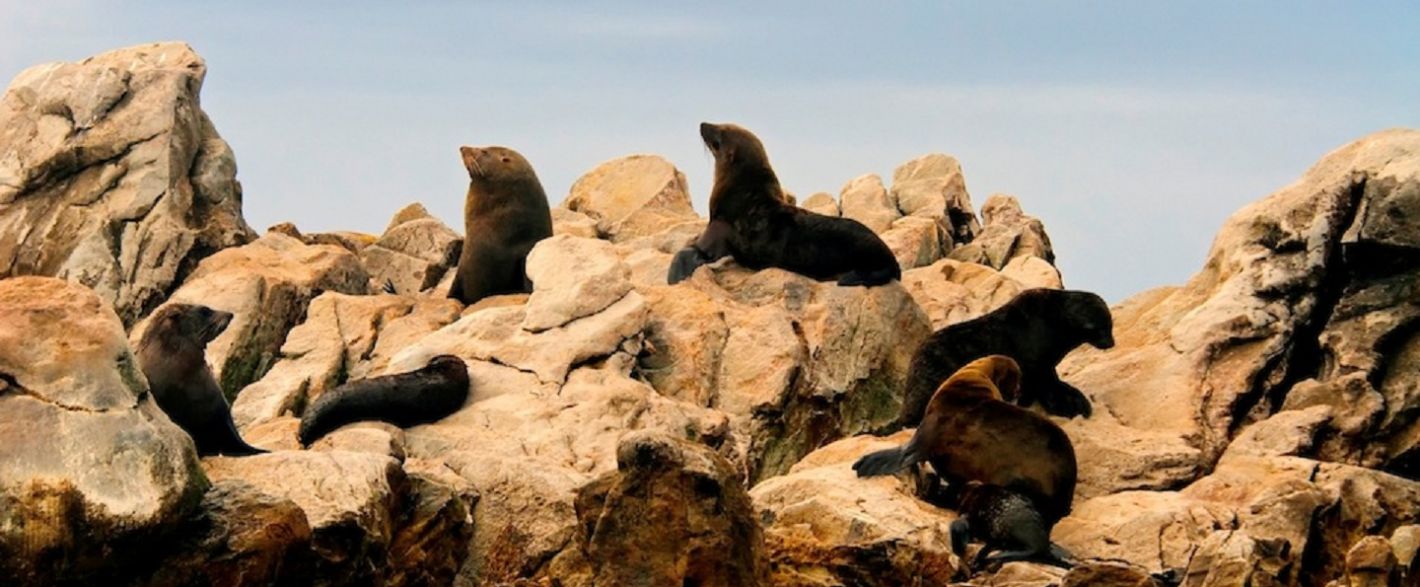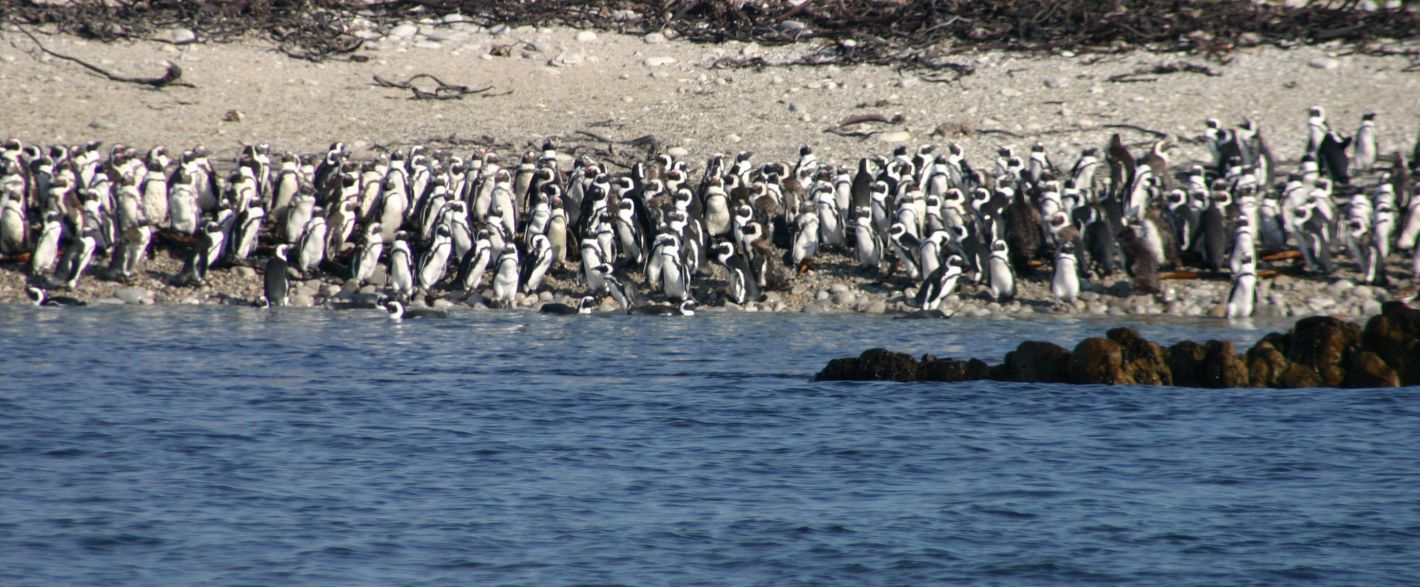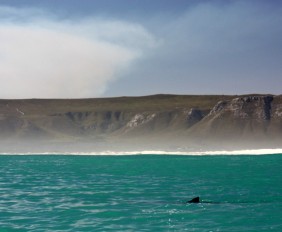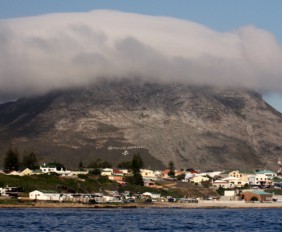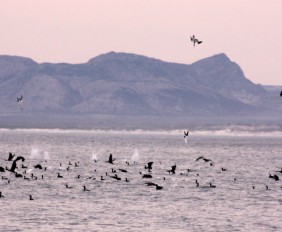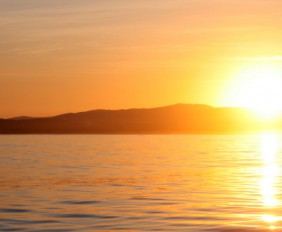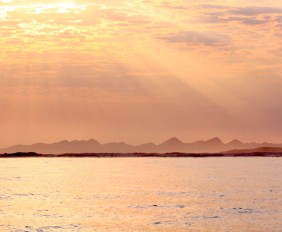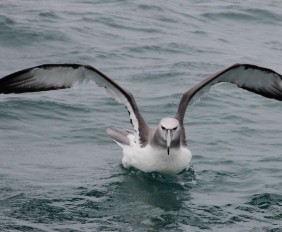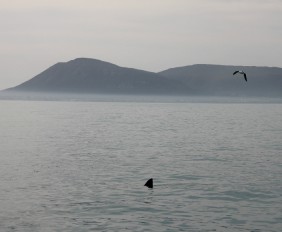Where are we?
Marine Dynamics is situated in the Great White House in Kleinbaai, a residential suburb of Gansbaai. We are within walking distance of the slipway in Kleinbaai, from where the shark cage diving boats are launched. Gansbaai is approximately 175 km South East of Cape Town (driving time about 2 hrs).
The Diving Area
The Gansbaai coastline - especially the area around Dyer Island - is not only world famous as the best place in the world to see (and dive with) the Great White Sharks in their natural habitat, but also for its abundant marine life and rare pelagic bird species. The term Marine Big Five originated here thanks to the huge amount of sharks, seals, dolphins, penguins and whales that flourishes in these waters! The best time of year to undertake a "marine game viewing tour" is between May and December when pods of dolphins and Southern Right Whales visit our coastline.
Dyer Island
Dyer Island is a protected bird sanctuary and used to house a large colony of African Penguins - about 25 000 pairs. Today, there are only about 900 penguin pairs left due to human interference (read more at the Dyer Island Conservation Trust). This small, 20 ha island is the easternmost of the chain of seabird islands of the Western Cape. Rare, endangered bird species such as the Roseate Tern and the Leach’s Storm Petrel still breed on the island, as well as seabirds such as the Whitebreasted, Cape, Bank and Crowned Cormorants, Kelp Gulls and Hartlaub’s Gulls, and Swift Terns. Huge roosts of terns, mainly the migratory Common and Sandwich Terns, occur in summer. Antarctic Terns, which breed on the sub-antarctic islands, roost here in winter. Dyer Island is a nature reserve belonging to CapeNature, but has no visitor access facilities. This is understandable both in terms of the sensitivity of the island’s birds to disturbance, and because it is very tricky to reach. The best landing place on the island can only be used in fairly calm conditions. Many people (including scientists) have been stranded there, waiting for the weather to clear!
Shark Alley
Adjacent to Dyer Island is Geyser Rock where a colony of 60 000 Cape Fur Seals breed. The strip of sea between Dyer island and Geyser Rock is aptly dubbed 'Shark Alley', as the seals who feed here are a constant food source to the sharks. During our winter months (May - August), the alley is particularly a hub of activity when many young seal pups end up as easy, juicy shark meals. The area around Dyer Island and Shark Alley is ideal for shark cage diving and provides excellent sightings of shark breaching and predation. It is an amazing experience to watch a Great White leap right out of the water to ambush a seal.
_1420x587_crop_80.jpg)
_1420x587_crop_80.jpg)
